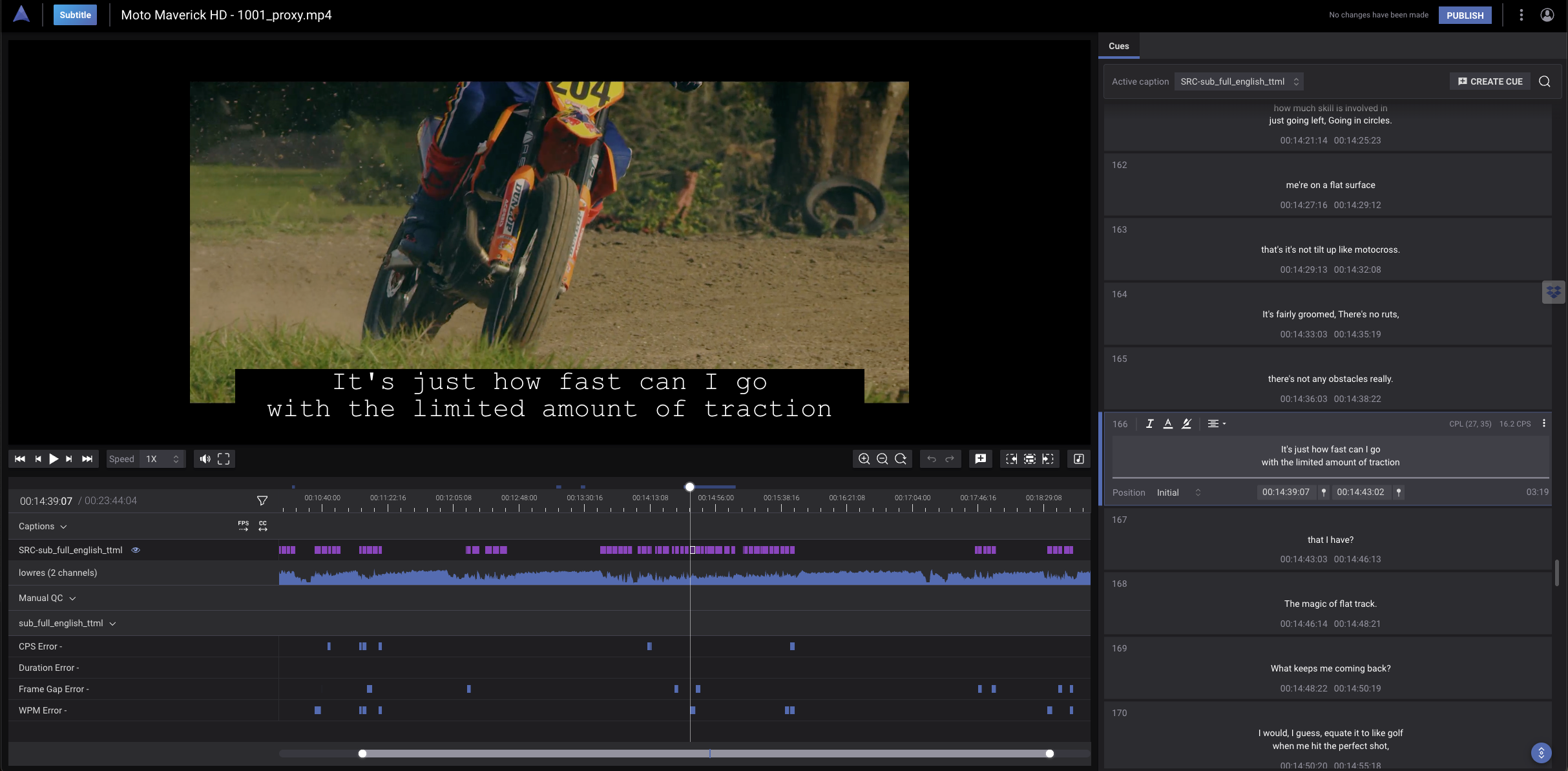An SDVI guest blog from Closed Caption Creator
Closed captioning has evolved from simply a broadcast requirement to an essential tool for inclusivity and audience engagement. In today’s diverse media landscape, delivering accessible content across multiple platforms presents a unique challenge. Each platform often has its own set of guidelines and style rules for closed captions, making the conforming process complex and time-consuming. Caption conforming ensures that your captions meet the specific requirements of each distribution channel, maintaining consistency and quality across all platforms. Despite the technical hurdles involved in meeting captioning requirements, the benefits of well-executed closed captioning are clear: it expands your audience, enhances brand perception, and creates a more inclusive viewing experience. Mastering the art of caption conforming isn’t just about compliance—it’s about optimizing your content for every platform while connecting with every potential viewer.
The Process of Closed Caption Conform
The conform process involves adjusting timing, formatting, and presentation of captions to align with various requirements, not just for traditional broadcasters, but also for OTT platforms like Netflix and Amazon Prime. As content creators deliver their programming to multiple outlets, each with potentially different closed caption specifications, the conform process becomes increasingly complex. Broadcasters and production companies must adapt their captions to meet the various standards of traditional TV channels, streaming services, and other digital platforms. As content volume and distribution channels multiply, scaling this process manually becomes increasingly challenging and time-consuming.

Style guides are essential in maintaining consistency and quality across captions. A comprehensive set of rules which define various parameters for closed captioning, style guides ensure uniformity and an optimal viewer experience. Each platform or broadcaster may adopt their own style guides. For example, Netflix has published their own set of style guide rules on their partner website available for anyone to reference. A typical style guide covers aspects such as reading rate (measured in characters per second or CPS), maximum characters per caption line, maximum caption lines per event, and a minimum duration between caption events. Additional guidelines may include text placement, formatting, and how to handle speaker identification or sound effects. By adhering to these style guides, captioners can create captions that are not only compliant with industry standards but also easily readable and accessible to viewers across different platforms and devices. The challenge lies in efficiently applying these complex rules across large volumes of content, especially when different distribution channels may have varying requirements.
Automation Changes the Game
By automating the closed caption conform process, media operations can dramatically improve efficiency and accuracy. The level of automation can vary. Some conform processes may require a human-in-the-loop approach, where automated tools handle the bulk of the work, but human intervention is needed for nuanced decisions or quality assurance. Other processes can be completely automated, especially for more straightforward conforming tasks. Tools like our Closed Caption Converter API offer process modules designed to address various aspects of the conform workflow. The Automatic Reading Rate module adjusts caption timing to match a specified reading rate and minimum duration, ensuring optimal viewer comprehension. The Automatic Format module reformats caption text to adhere to specific line and character limits, even converting three-line captions to two lines when required. These automated solutions can handle a wide range of conform tasks, from simple reformatting to more complex timing adjustments, allowing human captioners to focus on tasks that truly require their expertise.
By leveraging automation tools, broadcasters and content creators can achieve substantial benefits. The time saved by eliminating manual editing allows captioners to focus on more nuanced aspects of their work. This not only increases productivity but also reduces the risk of human error in repetitive tasks. For example, manual workflows often involve multiple steps: editing captions, reviewing changes, and potentially re-editing if errors are found. This process can be time-consuming and labor-intensive, resulting in higher costs and increased workload for staff. In contrast, automated workflows provide consistency and reproducibility, ensuring uniform output without the need for constant review. Moreover, automated conform ensures consistent compliance with varying broadcaster requirements, minimizing the need for rework and potential compliance issues. This streamlined approach not only saves time and resources but also allows for more efficient scaling of caption production across multiple platforms and content types.
compliance with varying broadcaster requirements, minimizing the need for rework and potential compliance issues. This streamlined approach not only saves time and resources but also allows for more efficient scaling of caption production across multiple platforms and content types.
The Added Value of a Service
To further streamline this process, our Closed Caption Converter API is now available in the SDVI Rally Application Services Market. This integration allows users to scale on-demand, processing a high volume of closed caption jobs efficiently. With the API already integrated into Rally, customers can get started immediately, eliminating long deployment times and accelerating their caption conform workflows. This powerful combination of automated caption conforming and seamless integration into existing media supply chains enables content creators and distributors to meet the diverse requirements of multiple platforms quickly and cost-effectively, ensuring that their content is accessible to the widest possible audience.
The potential cost savings and efficiency gains associated with automating closed caption conform are significant. By reducing manual labor and increasing throughput, organizations can process more content in less time, leading to improved resource allocation and reduced operational costs. As the demand for accessible content continues to grow across multiple platforms, investing in automated caption conform solutions becomes not just a matter of efficiency, but a strategic necessity for staying competitive in the evolving media landscape.
—
Learn more about Closed Caption Creator and automation of closed caption conform by visiting https://www.closedcaptionconverter.com/api.html
Ready to talk about how you can add this and other smart automation to your media supply chain? Contact us to start the conversation.



